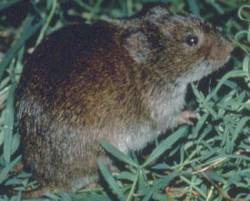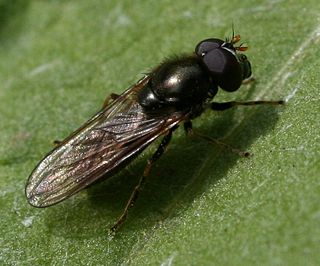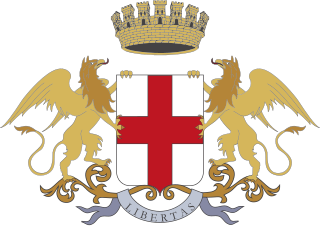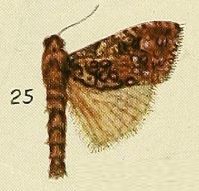
The northern parula is a small New World warbler. It breeds in eastern North America from southern Canada to Florida.

The Blanding's turtle is a semi-aquatic turtle of the family Emydidae. This species is native to central and eastern parts of Canada and the United States. It is considered to be an endangered species throughout much of its range. The Blanding's turtle is of interest in longevity research, as it shows few or no common signs of aging and is physically active and capable of reproduction into eight or nine decades of life.

The eastern cottontail is a New World cottontail rabbit, a member of the family Leporidae. It is the most common rabbit species in North America.

The eastern mole or common mole is a medium-sized North American mole. It is the only species in the genus Scalopus. It is found in forested and open areas with moist sandy soils in northern Mexico, the eastern United States and the southwestern corner of Ontario in Canada.

The eastern meadow vole, sometimes called the field mouse or meadow mouse, is a North American vole found in eastern Canada and the United States. Its range extends farther south along the Atlantic coast.

Arge pagana is a sawfly in the family Argidae. It is known by the name "large rose sawfly" although the related species Arge ochropus is also known by this name.

The spectacled monarch is a species of bird in the family Monarchidae. It is found in Australia, Indonesia, and Papua New Guinea. Its natural habitats are subtropical or tropical moist lowland forests, subtropical or tropical mangrove forests, and subtropical or tropical moist montane forests.

Nasi kuning, or sometimes called nasi kunyit, is an Indonesian fragrant rice dish cooked with coconut milk and turmeric, hence the name nasi kuning.

Cheilosia pagana is a Holarctic species of hoverfly. Like most Cheilosia it is black, and because of this may often be overlooked as a hoverfly. One identifying feature is a large red to orange 3rd antennal segment.

Little is known of Federico di Pagana, he came from the region of Rapallo on the Genoese Riviera, so it is unclear why he was chosen as doge after Nicolò Guarco was forced out of office on 7 April 1383. But the well-introduced and astute politician Leonardo Montaldo managed to have the election canceled and to be picked instead as the new doge. After this episode, Federico di Pagana disappears from the forefront of Genoese politics.
Mountelgonia is a genus of moths belonging to the family Cossidae, Metarbelidae.
Mountelgonia percivali is a moth of the family Cossidae. It is found from the areas east of the summits of Mount Elgon to the western highlands of Kenya. It is probably also found on the western side of Mount Elgon in Uganda. The habitat consists of dry Afromontane forest at high altitudes.
Mountelgonia lumbuaensis is a moth of the family Cossidae. It is found in the Mau Forest complex in the south-western highlands of Kenya. The habitat consists of both wet and dry Afromontane forest at high altitudes.
Mountelgonia abercornensis is a moth of the family Cossidae. It is found in north-eastern Zambia. The habitat consists of woodland mosaic at high elevations.
Mountelgonia thikaensis is a moth of the family Cossidae. It is found east of the eastern Great Rift Valley in the central highlands of Kenya. The habitat consists of a mosaic of scattered tree grassland and riverine forests.
Mountelgonia urundiensis is a moth of the family Cossidae. It is found on the high central plateau of Burundi. The habitat consists of forest/woodland mosaic with riverine forests at high elevations.
Mountelgonia arcifera is a moth of the family Cossidae. It is found in southern Kenya and north-central Tanzania. The habitat consists of open grasslands with shrubs and/or trees at medium to high elevations.

The Metarbelidae are a family of the Cossoidea also called the carpenter or goat moths, and is sometimes treated as a subfamily, Metarbelinae of the Cossidae. No synapomorphies are shared with the Cossidae based on adult morphology. The family Metarbelidae was first described by Embrik Strand in 1909.

The Castello di Punta Pagana is a 17th-century fort located on the homonymous Punta Pagana, within the grounds of Villa Pagana in Rapallo, within the Metropolitan City of Genoa in Italy. It is located west of San Michele di Pagana, close to the boundary with Santa Margherita Ligure. The fort was originally built by the Republic of Genoa, and today it belongs to the Sovereign Military Order of Malta along with the rest of the villa.

Kuning, also spelled koning, kyuning, or kiyuning and Anglicized as yellow rice or turmeric rice, is a Filipino rice dish cooked with turmeric, lemongrass, salt, bay leaves, and other spices to taste. It originates from the island of Mindanao and is a staple food among the Maranao people of Lanao del Sur. It is related to the Indonesian nasi kuning of neighboring Sulawesi, but it does not use coconut milk. The dish is characteristically yellow because of the use of turmeric.











